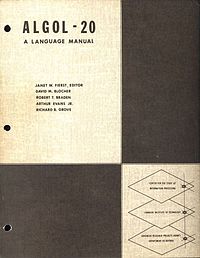
Photo from wikipedia
One-class classification, or outlier detection, is of great importance when data can be properly obtained from only one target class. The problem has many applications in various areas when the… Click to show full abstract
One-class classification, or outlier detection, is of great importance when data can be properly obtained from only one target class. The problem has many applications in various areas when the outlier class, defined as the complementary set to the target class, is absent. In this paper, we develop a novel one-class classification algorithm called the one-class polyhedral conic functions (O-PCF) algorithm. In this algorithm, the decision boundary for the target class is defined by PCFs' level sets. The level set of a PCF is a convex polyhedron; thus, only convex decision boundaries can be obtained with one PCF. However, the target class may have a non-convex structure. Thus, the O-PCF algorithm divides the target class into k clusters and obtains a PCF for each cluster. O-PCF constructs the final classifier as the minimum of k PCFs to generate non-convex separating surfaces. The performance of the O-PCF algorithm is presented in comparison with other methods in the literature. The test results lead us to conclude that the O-PCF algorithm outperforms the other methods in many cases.
Journal Title: Optimization Methods and Software
Year Published: 2020
Link to full text (if available)
Share on Social Media: Sign Up to like & get
recommendations!